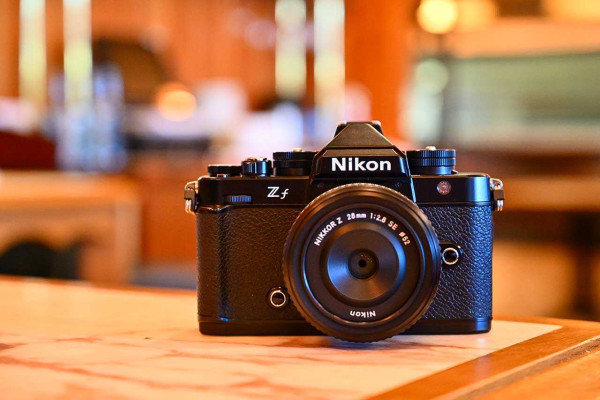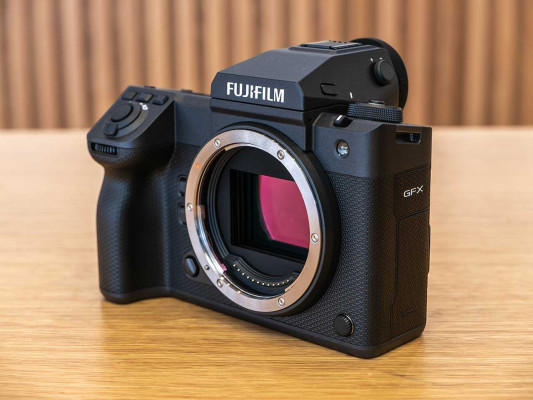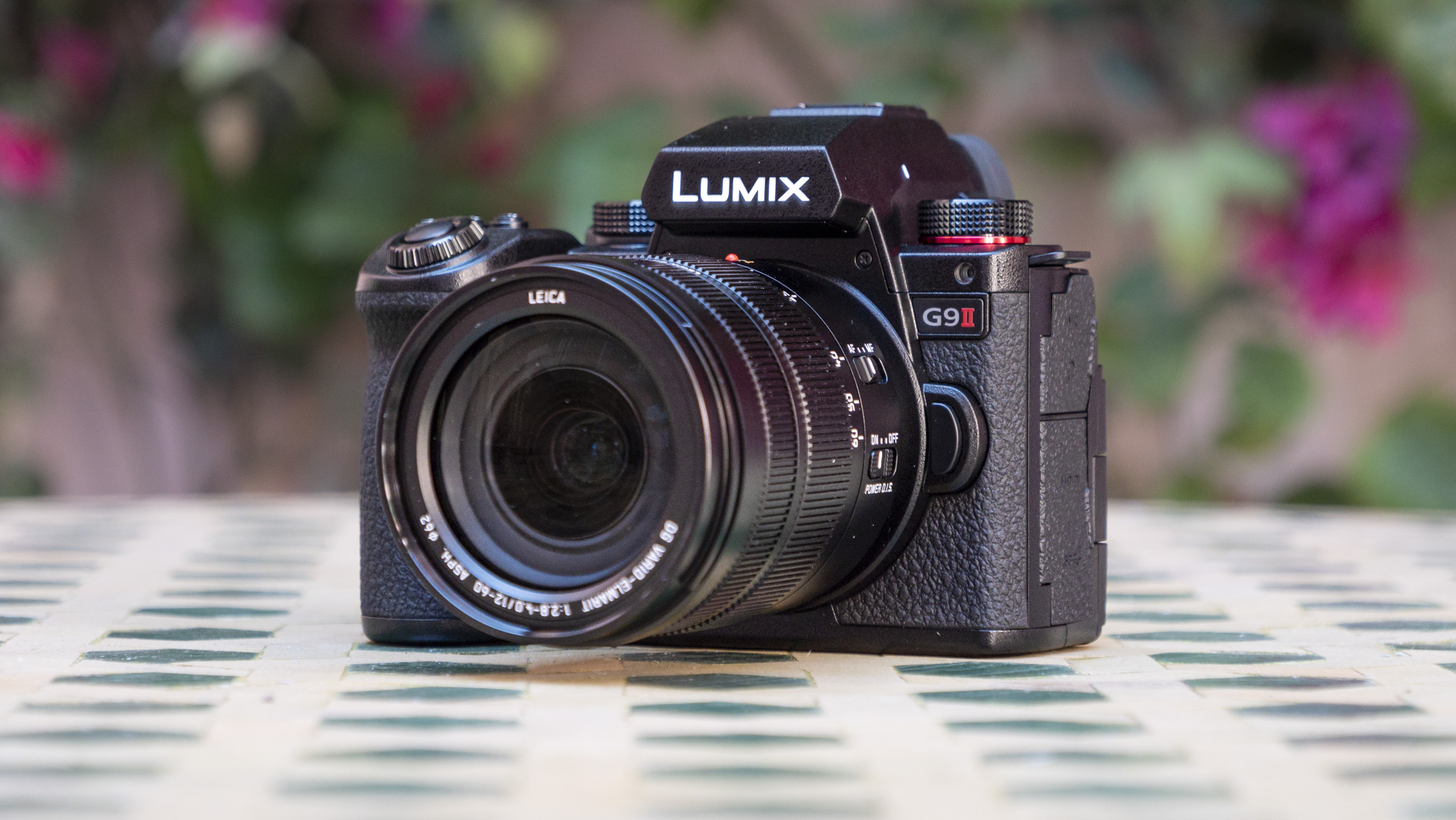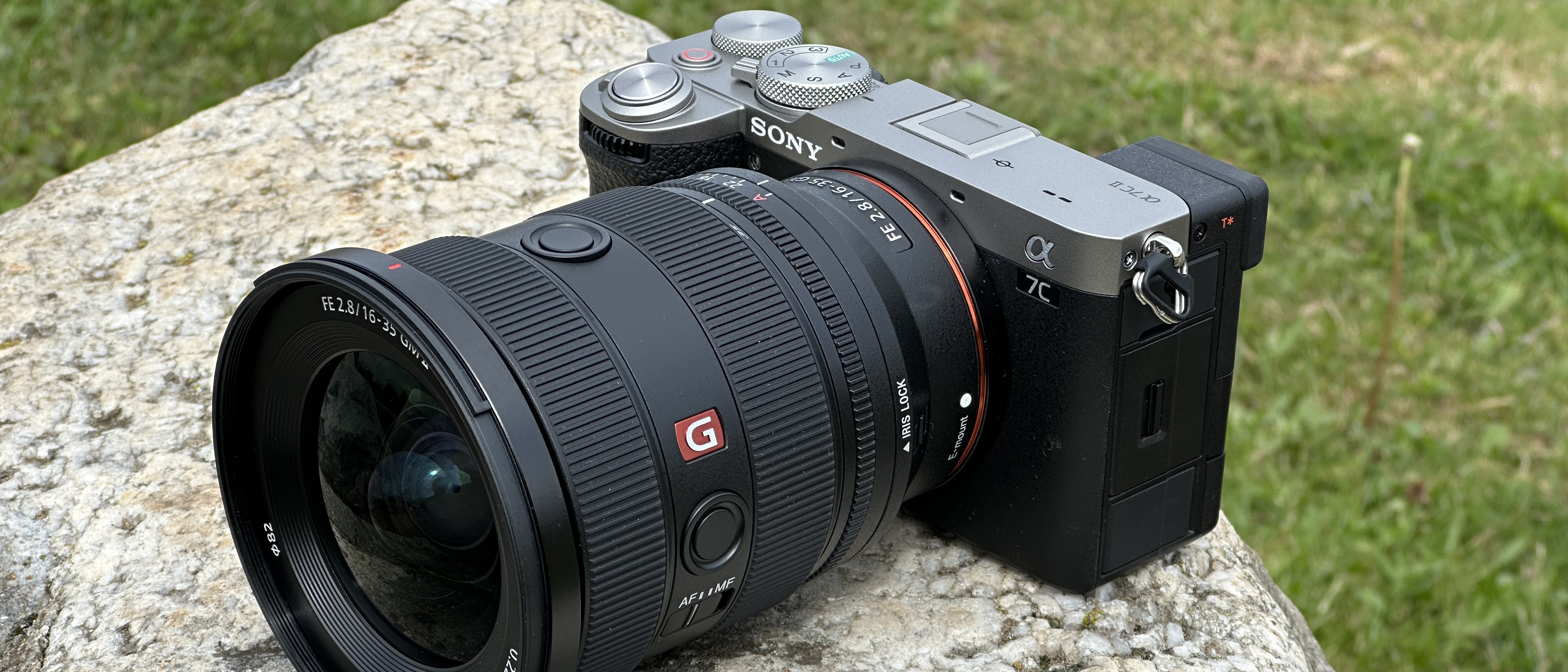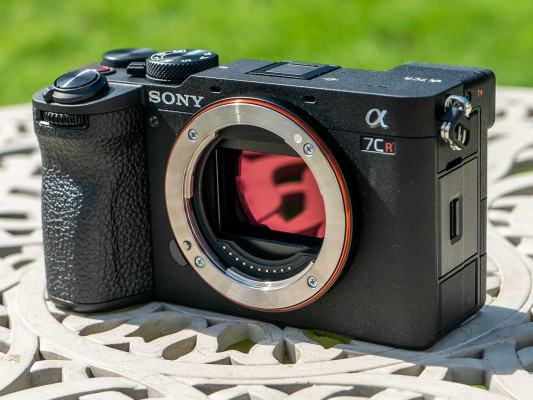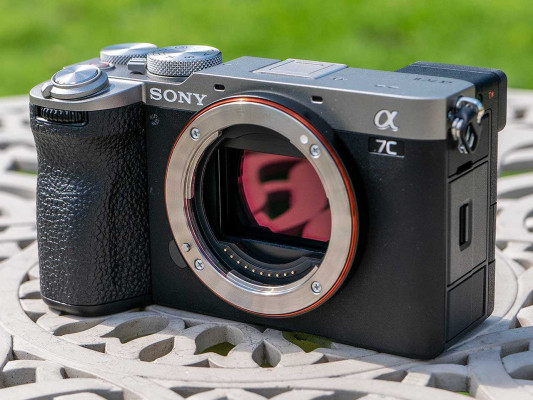Reviews

Nikon Zf preview
DPReview Latest |
Product photos by Richard Butler
Nikon's Zf is a full-frame mirrorless camera with classic styling, built around a 24MP BSI CMOS sensor. It's designed to mimic the look of the company's FM2 SLR from the early 1980s, meaning it effectively becomes a full-frame counterpart to the company's Z fc APS-C camera.
Key specifications
- 24MP full-frame BSI CMOS sensor
- In-body image stabilization rated up to 8EV
- Dedicated Monochrome mode
- Up to 14fps continuous shooting (JPEG), 11 fps Raw
- AF system with tracking and recognition of 9 subject types
- 4K/60 video from 6K capture with 10-bit N-Log recording
- 32-shot high-res mode to give 96MP images
- SD and MicroSD card slots
The Zf will be available will be available from mid October at a recommended price of $2000, the same as the launch price of the Nikon Z6 II, which gives a reasonable idea of the camera's ambitions.
Index:
- What's new?
- How it compares
- Body and controls
- Initial impressions
- Sample gallery
- Specifications
- Press release
Support DPReview, pre-order the Nikon Zf at one of these retailers:$1,997 at B&H $1,997 at Adorama |
|---|
What's new?
Sensor/Processor
 |
Nikon isn't making any claims about the Zf's 24MP BSI CMOS sensor being new and, other than wider AF coverage, most of its performance appears to be consistent with the elderly but well-respected sensor in the Z6 II.
The adoption of the latest 'Expeed 7' processor brings significant changes, though. For a start it brings subject recognition to the camera's AF system as well as a Z9-like implementation of the company's '3D Tracking' along with the 9-type subject recognition system. In addition there's context-sensitive noise reduction that more aggressively smooths areas that appear not to have detail. It's this noise reduction in the JPEGs and HEIF files that convinced Nikon to let the camera's ISO range expand up to 204,800 (the unexpanded limit also rises to 64,000).
The move to the latest processor also allows the Zf to capture Raw files compressed with the more efficient High Efficiency compression system we first saw on the Z9.
We've been given a variety of numbers for the camera's burst rate, with 11fps apparently the maximum rate in Raw (in Continuous High Extended mode, that we suspect won't include live view refreshes between shots), and up to 15 or 14fps depending on the use of electronic or mechanical shutter for JPEG mode. There's also a JPEG-only 'C30' mode that uses a video stream to shoot 30fps images, with a pre-burst option like that on the Z8 and Z9.
B&W mode
Commanding its own position on the control that selects between stills and video shooting, the camera's black and white mode gives a choice of mono profiles including a low-contrast 'Flat mono' and 'Deep tone mono' that accentuates red details in the scene. These profiles can be applied to both still images and video footage, and emphasize Nikon's focus on the creative process.
Video capabilities
 |
Unlike the Df, which promised photographic purity by omitting an video features, the Zf is a pretty capable video machine. It can shoot up to 4K/60 from an APS-C (DX in Nikon speak) crop of the sensor or can capture 4K up to 30p from the full 6K pixel width of its sensor.
The camera we used was pre-production but the 22ms rolling shutter we measured for 30p capture is consistent with the existing sensor in the Z6 models. We doubt it's a coincidence that Panasonic's S5 II models also have to crop in to an APS-C region to deliver 60p capture, while showing similar readout speeds.
Multi-shot pixel shift
Nikon joins the ranks of camera makers using its image stabilization system to offer a multi-shot pixel shift mode, moving the sensor by precise degrees to ensure the capture of each color at every pixel location or in fractions of a pixel to boost the resolution of the output image. Nikon's system offers four modes, all of which require that Raw files be combined in desktop software: a four-shot mode that captures full color at each pixel, an 8-shot mode that does this twice, to further improve tonal quality and noise, a 16-shot mode that also boosts image resolution 96MP, and then a 32-image version that doubles this up, too.
Image Stabilization linked to AF point
As companies try to maximise the performance of their IS systems, it's becoming more and more difficult to offer further improvements. Nikon says the Zf's performance has been improved by linking the IS system to the chosen autofocus point.
The benefit of this may not be immediately obvious because the position of the AF point doesn't make any difference to most of the types of movement being corrected, but for rotation about the lens axis, it makes a difference. Treating the AF point as the center of rotation (rather than the center of the sensor), subtly changes how you'd want to correct rotational movement. This approach should help maintain sharpness at the point you're focused on, helping the camera to its 8EV stabilization rating, when tested to the CIPA standard.
How it compares
| Nikon Zf | Sony a7 IV | Canon EOS R6 II | Panasonic Lumix S5 II | Nikon Z6 II | |
|---|---|---|---|---|---|
| MSRP at launch | $2000 | $2500 | $2500 | $2000 | $2000 |
| Sensor size | Full-frame | Full-frame | Full-frame | Full-frame | Full-frame |
| Resolution | 24MP | 33MP | 24MP | 24MP | 24MP |
| Stabilization | 8EV | 5.5EV | 8EV | 5EV (6.5EV with lens) | 5.5EV |
| Burst rate | 11 fps Raw 14 fps JPEG (15 e-shutter) |
10 fps | 12 fps (40 fps e-shutter) | 7 fps (30 fps e-shutter) | 14 fps |
| Viewfinder res / mag | 3.68M dot OLED 0.8x |
3.68M dot OLED 0.78x |
3.68M dot OLED 0.76x |
3.68M dot OLED 0.78x |
3.69M dot OLED 0.8x |
| Rear screen | 2.1M dot fully articulated |
1.04M dot fully-articulated | 1.62M dot fully-articulated | 1.84M dot fully-articulated | 2.1M dot tilting |
| Video | 4K/30p full width 4K/60p APS-C |
4K/30p full width 4K/60p APS-C |
4K/60p full width 4K/60p APS-C |
6.2K/30p (3:2) 5.9K/30p 4K/30p full width 4K/60p APS-C |
4K/30p full width 4K/60p APS-C |
| 10-bit modes | N-Log, HLG (HDR) | S-Log3 HLG (HDR) |
C-Log2 HDR PQ |
V-Log HLG |
Over HDMI |
| Rolling shutter (4K/24) | 22ms | 27ms | 17ms | 21ms | 22ms |
| Storage | 1x UHS-II SD 1x UHS-I Micro SD |
1x CFe Type A / UHS-II SD 1x UHS-II SD |
2 x UHS-II SD | 2 x UHS-II SD | 1x CFe Type B 1x UHS-II SD |
| Battery life LCD / EVF |
380 / 360 | 580 / 520 | 580 / 320 | 370 / 370 | 410 / 340 |
| Dimensions | 144 x 103 x 49mm | 131 x 96 x 80mm | 138 x 98 x 88mm | 134 x 102 x 90mm | 134 x 101 x 70mm |
| Weight | 710g (25.0oz) | 659g (23.3 oz) | 670g (23.6 oz) | 740g (26.1oz) | 705g (24.9 oz) |
Body and handling
The most obvious thing to say about the Zf's body is that it very closely resembles the Nikon FM2 film camera from the 1980s. Placed side-by-side it's apparent the new camera is larger but the proportions have been kept, so it still looks the part.
The Zf has primarily magnesium alloy construction (with some plastic panels to act as a radio window to let the Wi-Fi work). Its adherence to the traditional look means that there's no protruding hand grip yet, like the FM2 and cameras of its vintage, it can be used quite comfortably. The few millimeters of added depth don't make it hard to grasp and the dials feel well positioned such that they can be operated without feeling like you're going to drop the camera.
There was some criticism of the smaller Z fc, that its light weight made it feel flimsy, an impression compounded by rather plasticky dials. The added heft of the Zf avoids this problem: it feels more substantial and the feel of the controls is consistent with that.
Card slots
 |
| Perhaps the most baffling decision on the Zf: two card slots hidden in the battery compartment, one of which is a UHS-I Micro SD slot. |
Nikon has given the Zf two card slots, but to keep its size under control, has opted to make the second card slot a MicroSD type. These are pretty small and can be fiddly to insert and remove from the camera, so it might make sense to leave a fast microSD card in the camera at all times as overflow, rather than planning on removing it too often. That said, while the SD slot is UHS II compatible, the Micro SD is only UHS I.
The slots are positioned next to one another in the battery compartment, adding an extra layer of inconvenience, especially for tripod users, though the speed of the USB-C port means it's easy enough to get data off the camera or power into it, without accessing the underside door at all.
Viewfinder
 |
The Zf has a 3.68M dot EVF, which is not especially high by today's standards. Without the super-fast dedicated readout path that the Z8's sensor offers, it can't match the near-zero-lag experience that that camera does. Overall it's a pretty middling viewfinder experience but one definitely improved by the pretty good 0.8x magnification.
Screen
The Zf's rear touchscreen is fully articulated: a choice that made more sense on the more video and social media focused Z fc. It's an 2.1M dot LCD that we found to work well even in bright light, but I suspect we won't be alone in having preferred the two-way tilt arrangement of the Z8's screen, which could potentially have made the camera a fraction slimmer.
Battery
 |
The Zf uses the same EN-EL15c battery as the majority of Nikon's mid-range cameras, which powers it to a respectable rating of 380 shots per charge (LCD) and 360 shots per charge (EVF). These numbers rise to 430 and 410 shots per charge if you turn energy saving mode on. It's rechargeable over the camera's USB C port of which, unlike the Z8, there's just one.
Unlike the Z6 II, there's no option to mount a battery grip to the Zf.
Initial impressions
By Richard Butler
 |
When Nikon introduced the smaller-sensor Zfc model, it made very clear that it was a camera designed for social media content creators, hoping to attract some of the younger photographers who've perhaps learned the craft on second-hand 70s and 80s film SLRs. But Nikon can't have missed the number of established photo enthusiasts who said they wanted a full-frame version.
That said, Nikon is also likely to remember that the initial buzz generated by the teaser videos for its last retro full-framer (the rather half-baked Df) didn't turn into the sales success it was hoping for.
However, where the Df was a rather misproportioned lump that commanded a significant premium over the D610 on which it was heavily based, the Zf is an altogether more handsome affair (and if you're aiming to attract a style-conscious audience, that matters), and one that out-specs the Z6 II while selling for the same price.
 |
In fact, in the absence of a Z6 III, the Zf becomes the company's best-specced camera around the high-contested $2K price point. It still seems to use the same image sensor as the previous Z6s but features the newer Expeed 7 processor from the Z9 and Z8, which brings updates such as the mirrorless camera implementation of the company's '3D Tracking' system.
"In the absence of a Z6 III, the Zf becomes the company's best-specced camera around the high-contested $2K price point"
These days we can simply call it 'tracking,' as the majority of brands have now adopted a comparable approach of simply following whatever is under your chosen AF point (or near to it, in the case of most subject recognition systems). It's such an obvious approach that for once the term 'intuitive' might almost be appropriate, but the idea of integrating tracking into the main AF interface really started with Nikon, so it's great to see the Zf catch up to the 'best practice' approach that Nikon itself pioneered.
Multiple multi-shot modes
In a more reactive manner, Nikon has also become one of the last brands to add a multi-shot high-res mode to its camera. Multi-shot modes that try to cancel-out the effect of the Bayer filter or oversample the scene to produce more detailed images have become increasingly common as engineers look for ways to exploit the presence of in-body stabilization mechanisms.
In many instances, they're not terribly useful: often requiring tripods and near-static subjects, with combination of images often requiring proprietary desktops software. There are clearly lots of patents protecting different implementations, as almost every brand appears to take its own approach (in terms of the number of shots, degree of in-camera processing).
The Zf offers a range of modes, including one that takes a staggering 32 images, collected in around four seconds, to deliver a 96MP final image. That's a long time during which your subject might move, which undermines its usefulness, but there are at least other options if your subject doesn't include much motion. So, perhaps primarily in the interest of people who like to wage brands wars over the obscure ends of the spec sheets, Nikon now offers the feature.
 |
In use the Zf was enjoyable during the period I got to use it. The distinctive styling was something of a curse, given Nikon's concerns about it being seen out in the wild, but from today onwards, it's more likely to be an asset. The camera I used was the all black version but six other leatherette color schemes will also be available. There's no news of a silver/black version. It's not clear whether this is because of the challenge of delivering matched silvers across different materials, to maintain the camera's premium character, or because Nikon plans a special edition at some point in the future.
The pre-production camera I was using started to show temperature warnings after around two hours of stills shooting, but it should be noted that I was shooting in 32°C (90°F) conditions, often in direct sunshine. It didn't get warm enough to start a countdown to auto shutoff, though.
AF tracking isn't as sticky as with the Z8 and Z9. This isn't a huge surprise but, for instance, when I tried to pick out a particular part of a flower, the Zf's tracking target would sometimes wander off the specific detail I'd been wanting it to track. Performance with a recognized subject appeared excellent, though, with seemingly unerring tracking of eyes, for instance.
Ultimately, though, the Zf moves things forward from the Z6 II and finally seems to deliver the camera that so many people hoped the Df would be. Now if only the barriers to Sigma introducing its compact, aperture ring-sporting i-series primes for Z-mount could be overcome, then things would get very interesting indeed.
Sample gallery
Please do not reproduce any of these images on a website or any newsletter/magazine without prior permission (see our copyright page). We make the originals available for private users to download to their own machines for personal examination or printing (in conjunction with this review); we do so in good faith, so please don't abuse it.






